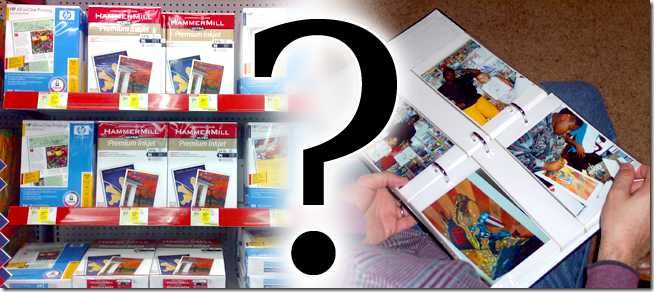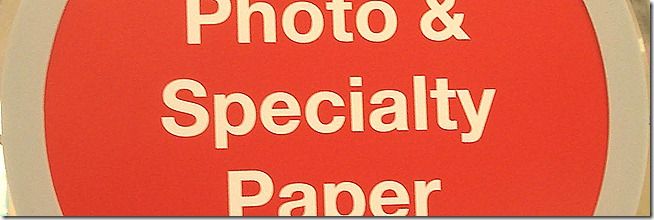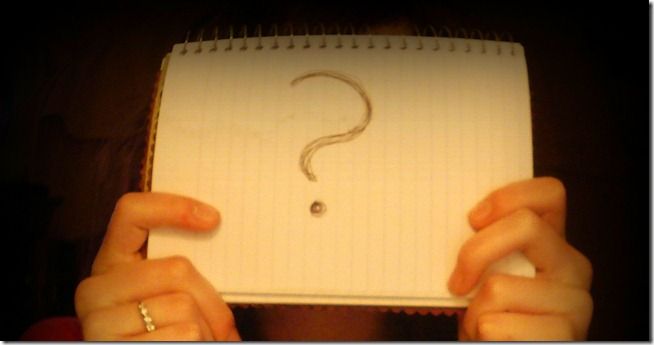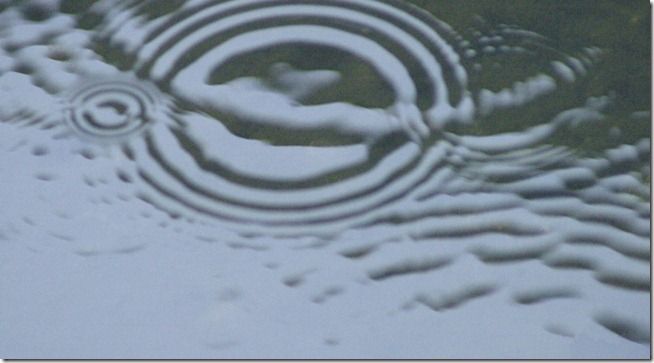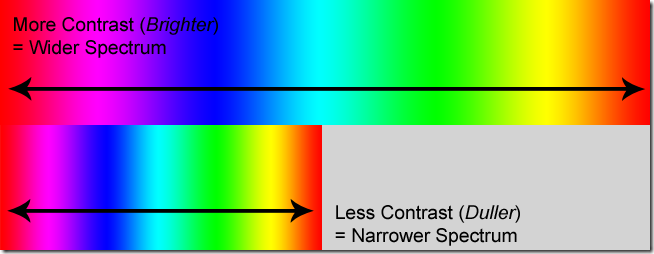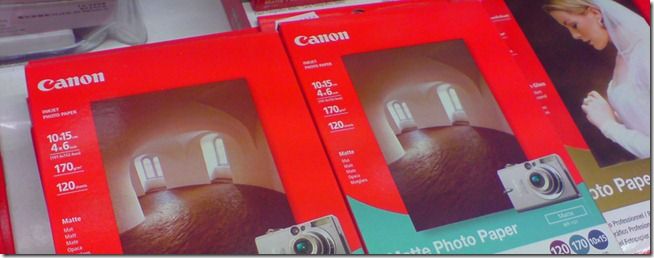So you've shelled out the money for a fancy inkjet photo printer, only you're not impressed with the images you're getting out of your standard office paper. Have you ever wondered why that photo paper works so much better?
Surely, paper is paper, right? What can be so special about it? In this article, we'll explore the differences between regular typing paper, why these differences are good for printing, and how to take advantage of them for superior photographic printing.
Isn't Photo Paper a Ripoff?
Everything associated with home printing is priced at a high premium---most notably ink cartridges. Photo paper, while priced at a high retail markup, is well worth the cost to any knowledgeable photographer or print lover. A good piece of photo paper will solve problems that most users won't even realize that they might have had.
Naturally, photo paper is too expensive to use for the everyday sort of printing, even if the quality is decidedly higher. There are different grades of ordinary printing paper that can give some of the benefits of photo paper (cleaner, clearer images; brighter color; cleaner text) but at cheaper rates. But, in order to understand what to look for in a printing paper, we'll have to understand what sets different grades of papers apart.
What is There to Know About Paper?
Like many aspects of graphic arts, paper has its own set of complicated esoteric terms. Take a look at some of the most important terms you'll run into, and how they can help you when buying good quality photo paper.
Weight: The amount of mass of a ream of 500 pages of the paper in question before it is cut down to whatever its current size may be. Don't expect a ream of 32 pound typing paper to weight 32 pounds! Paper weight is simply an offhand way to measure the density of a paper. It is a very common way to distinguish amongst paper types, even for ordinary retail papers.
Point size: While this term may seem familiar to those that have studied typography, point size is a measure of the thickness of paper, unlike weight, which is a measure of density of paper material. Points are one thousandth of an inch, with heavier papers having higher point sizes. Most retail and end-user papers have no mention of point size of papers, generally using weight as the only metric to measure a paper by. Business cards are often printed on thicker stocks, for example, 14 pt stock, or 0.014 inches.
Brightness: Brightness is the amount of light that is reflected off of a blank page. The brighter a page, the better color range is achievable, allowing for brighter colors and higher contrast. More contrast in lights and darks achieves a better color gamut (or range of colors) out of printers. Naturally, the brighter the paper stock, the better. Brightness is measured in values from 0 to 100. For instance, you can likely buy fine quality reams of typing paper with a brightness of 90.
Whiteness: Easily confused with paper brightness, "whiteness" is the shift in hue of the paper, similar to the various hues of soft white and bright white lightbulbs. Some papers have a color tint that leans warmer, yellower, or bluer. Many photo papers tend to lean blue, as bluish papers tend to be perceived as brighter than more neutral white papers. Many retailers might not sell papers that make note of whiteness; readers may simply want to note the color their white paper leans for their own purposes.
Paper stock: Related to point size and weight, various densities, thicknesses, and paper qualities have various names, like "Newsprint," "Cardstock," or "Bristol." Many photo papers are heavier weights, often in an attempt to recreate the feel of old style photo prints on light sensitive paper developed with photo chemistry.
Coated Paper: Most photo papers are coated with a layer of chemical bonded to the paper, intended to allow inks to be absorbed more accurately, creating better quality images. Note that some papers are simply coated on one side, with a clear front and back, while others are coated on all sides.
Gloss: One of the most common types of photo papers, Glossy papers are coated with a bright, shiny emulsion, giving inkjet prints rich depths of color and a bold, shiny sheen.
Matte: Duller and more understated, matte photo papers are often coated as well, albeit coated to appear softer. Uncoated papers are often called "matte," although this is a bit of a misnomer. Simply keep in mind that coated papers exist with matte finishes, as well as uncoated papers exist that necessarily have matte quality surfaces.
Why is Coated Paper Better than Regular Paper?
Inkjet printers fire ink at pages in small liquid drops. Paper, having been made from wood, is porous, and accepts the liquid material with capillary action, drawing it out in multiple directions the person doing the printing might not have intended. To explain it more accurately, the wet liquid inks have a tendency to flow, and flow from areas of high concentration into the porous papers, or open areas of low concentration. Because your inks are diffusing into your paper, you'll notice your regular typing paper gets wobbly and your images aren't as clean and crisp. What's the solution?
Coated papers are chemically treated to help the paper be a better printing substrate---in fact they are expertly engineered to solve this problem so you don't have to think about it. Ink blots rest on the emulsion in a wet state, but stay neatly put and are also neatly absorbed. Images stay clean, by microscopically controlling the absorption of inks into emulsified surfaces. This means your printed image will change less over time, as inks settle and dry, leaving pigment behind, locked into the surface of your photo paper.
Why Do Brighter Papers Have Better Color?
Coming back to the concept of Color Gamut, inkjet printers use four primary colors of Cyan, Magenta, Yellow, and Black to create a spectrum of colors. When the white canvas they lie on is duller, the mixtures of these colors have less range---the darks and lights are more similar to the darks and lights on brighter papers. A good comparison is to that of HD Televisions and Contrast Ratios, although the visual aid may explain the difference better.
Because your black point and your white point are closer together on duller papers, your spectrum of available colors (or color gamut) is narrower. Fewer colors are available, and these will tend to be duller. Starting with brighter papers will allow for a richer, fuller spectrum, with black points and white points as far apart as possible.
Is High Quality Paper a Guarantee of a Great Print?
Simply said, no. There are a thousand and one different reasons your prints will not turn out the way you want them to, and photo papers are merely one part of a very complex equation. They are a very important part of that equation, however. You would be wise to think about your photo printing needs when looking into photo paper, buying according to your printing goals.
Can good quality photo paper improve the quality of prints from your injet photo printer? Without a doubt, as increased color range and better, cleaner dots on coated papers will without fail create better prints than on typing papers. Will photo papers safeguard against human error, uncalibrated monitors, or poor quality printers? Simply said, no.
Don't be discouraged by this, though. Simply keep in mind the terms and concepts mentioned here when buying your photo paper, and you'll learn to produce better photo prints than ever before.
Image Credits: Staples Paper by DavidPitkin, available under Creative Commons. The Paper Heroes Photo Album by roadkillbuddha, available under Creative Commons. Photo and Specialty Paper by mag3737, available under Creative Commons. Sphere-itize me Captain by db photographs, released under Creative Commons. Canon Matte Photo Paper by Cаt, available under Creative Commons.

